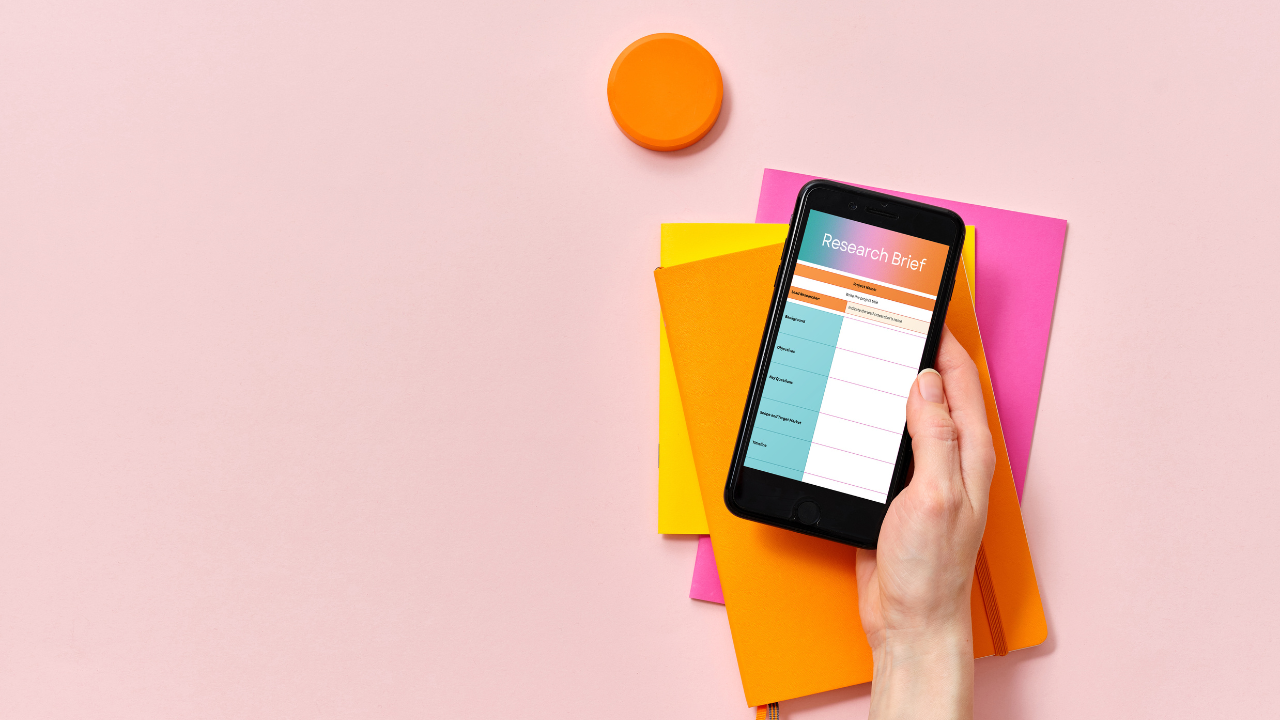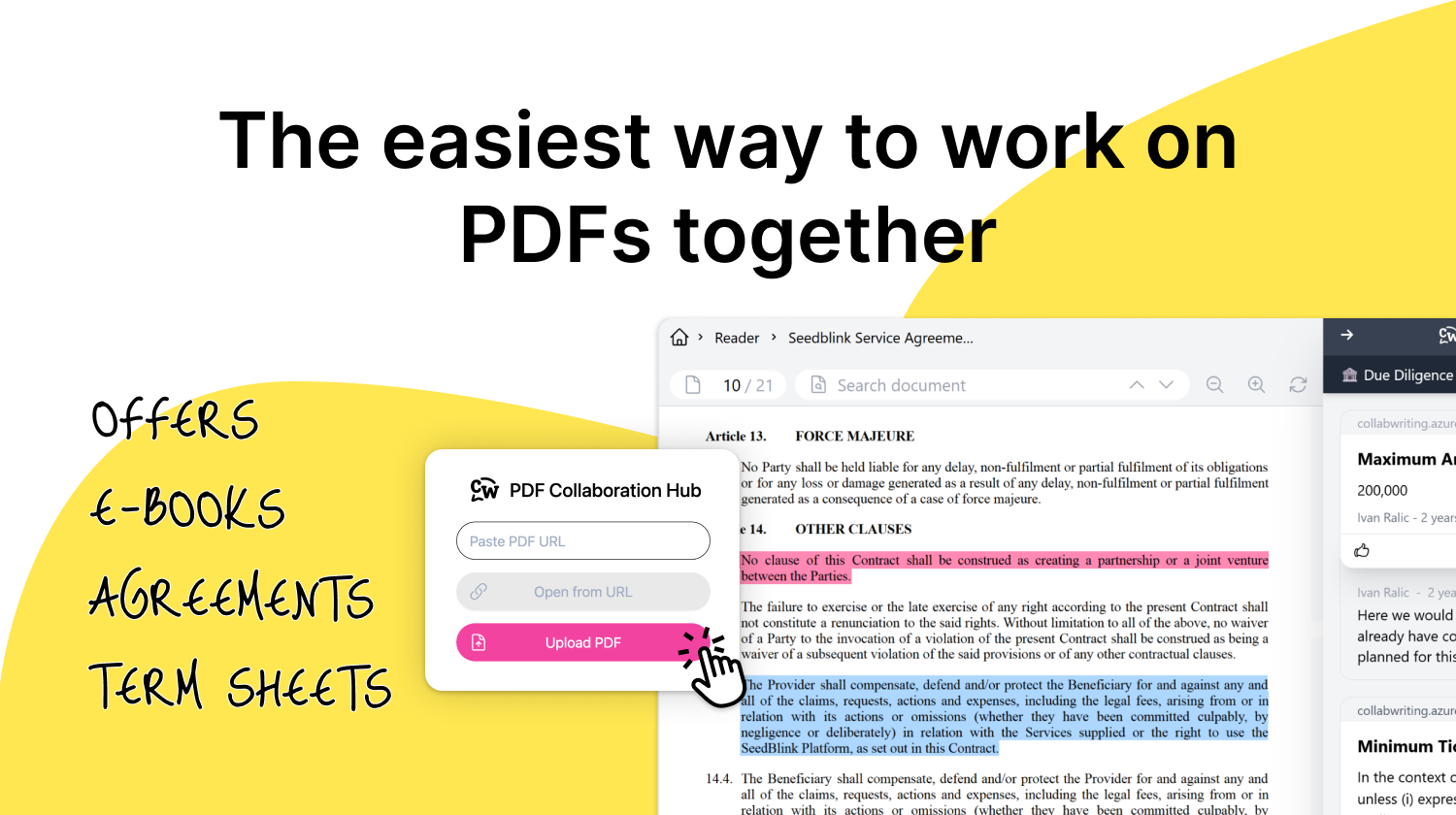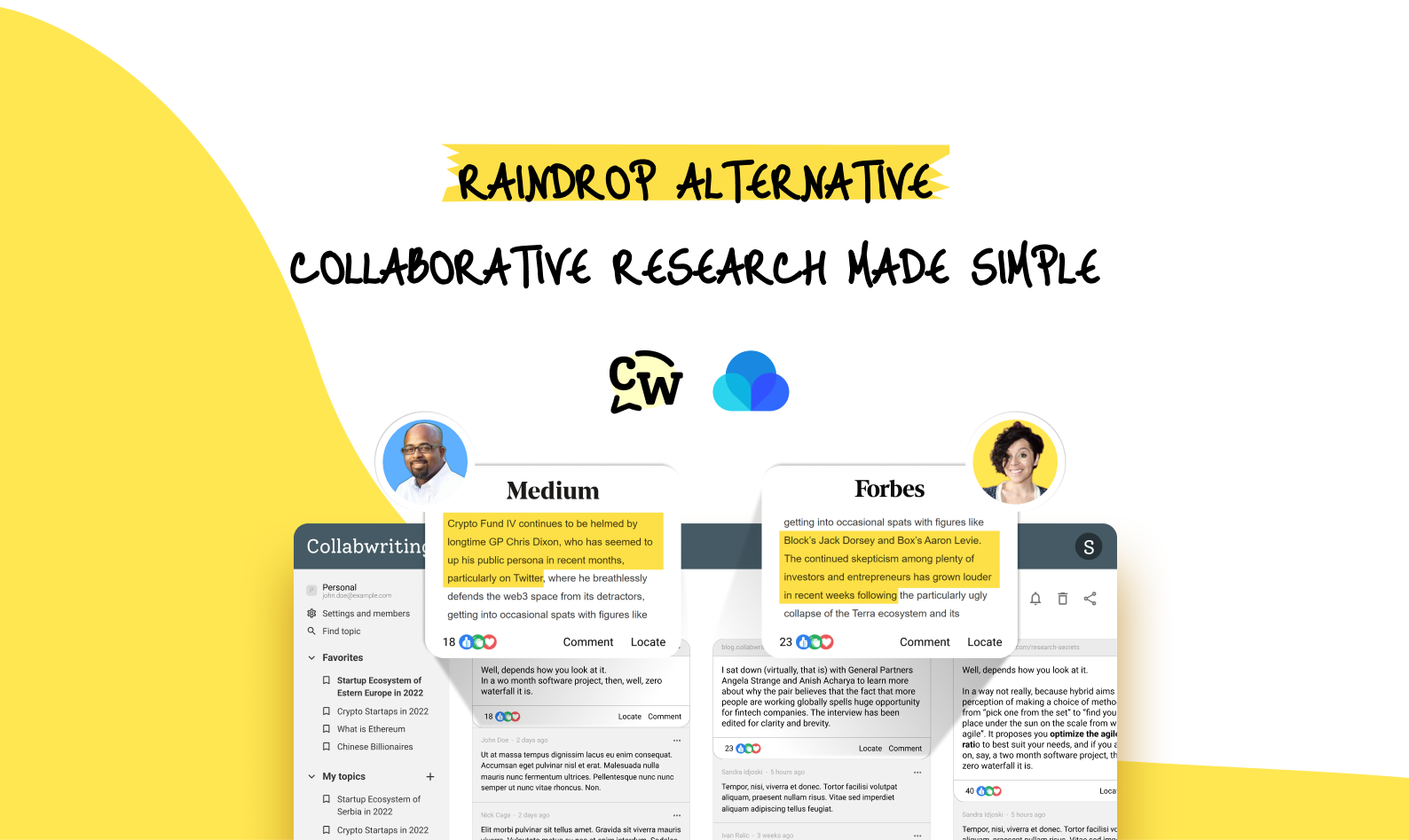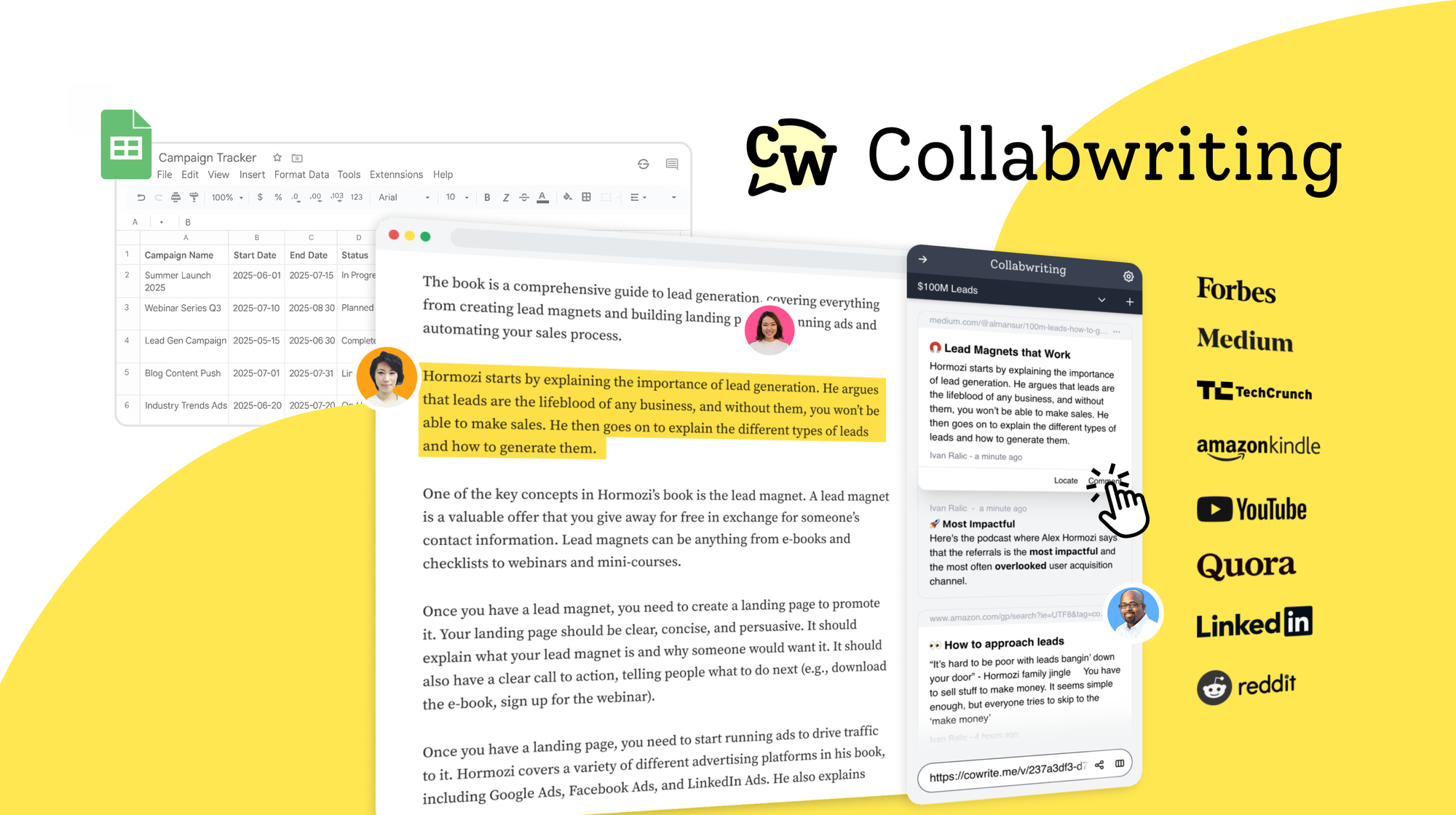Would you believe me if I told you this?
- Your brain is constantly eating itself.
- The fear of long words is called Hippopotomonstrosesquippedaliophobia.
- You remember more dreams when you sleep badly.
- People who eat whatever they want and stay slim often have a slow metabolism - not a fast one.
Sounds wild, right?
Now, imagine I just left it at that - no sources, no proof. You might think: ''Cool story. But where’s the proof?''
That’s the problem we’re facing today.
People share facts, give advice, and build strategies - without backing them up.
✖️ No evidence. ✖️ No context. ✖️ No accountability.
And while it might not always have consequences, it can damage credibility, especially when the people reading expect more than just claims.
(Btw, 👉 here’s the proof behind the facts I shared. Yes, I did my homework.)
Now let’s break down how to build real credibility in your writing - and turn strong evidence into useful insights.
Building credibility - 4 key questions
Collecting links and screenshots is easy, but it’s not an effective long-term solution.
Sure, it doesn’t take much time. But you also can’t expect people to fully trust you or keep coming back to your work if that’s all you rely on.
What truly matters in the research process is asking the right questions before sharing your point of view with the world:
- Where does this come from?
- Can I trust the source?
- How does it support my argument?
- And how can I use it without taking it out of context?
Knowing that strong evidence boosts your credibility is one thing. Actually finding that evidence, saving it thoughtfully, and using it in a way that connects with your audience - that’s a whole different challenge.
Many people get stuck here: overwhelmed by too much information, unsure which sources are trustworthy, or simply lacking a system to organize their findings.
To get started, let’s answer some of the key questions you should always ask when working with information.
1) Where does this come from?
Always check where the information is coming from.
Is it a trusted publication? A peer-reviewed study? An expert in the field? Or a primary source?
Try to avoid secondhand info like opinion blogs without evidence or anonymous posts. And whenever you can, go straight to the original source, not just a summary or someone else’s take on it.
2) Can I trust the source?
Evaluate the credibility of the source by considering its reputation, expertise, and potential biases.
Ask yourself:
- Is the author an expert?
- Is the publication known for accuracy?
- Does the source have an agenda that could skew facts?
- Cross-check facts across multiple trusted sources to verify reliability.
3) How does it support my point?
Don’t just collect facts randomly. Each piece of evidence should clearly relate to the argument or insight you want to make.
Ask:
- Does this information strengthen or clarify my point?
- Does it add new understanding or challenge my assumptions?
- How can I connect it logically to my overall narrative?
4) How can I use it without taking it out of context?
Avoid cherry-picking quotes or data that misrepresent the original meaning.
Always present evidence fairly and transparently. Provide enough background or explanation so your readers understand the context. If possible, link to the full source so others can check it themselves.
💡 Do you remember I included a link at the very beginning of this article, so you could check where those random facts came from?
That’s what I’m talking about.
Common mistakes people make with evidence
Before you share any evidence, watch out for these common mistakes that can undermine your message.
- Citing old or broken links: Just because a link worked once doesn’t mean it still does. Outdated sources can hurt your credibility and make your content feel unreliable.
- Using screenshots with no context: A screenshot might look convincing, but without the full source, date, or explanation, readers can’t verify it - and may question your intent.
- Quoting opinions as if they were facts: Not every quote is evidence. If you're sharing someone’s opinion, make it clear, otherwise, it can mislead your audience.
- Trusting a single source without cross-checking: Even trustworthy sources can get things wrong. Always verify key claims across multiple sources to avoid spreading misinformation.
Simply collecting facts isn’t enough. You need to choose reliable sources, provide context, and verify information carefully.
➡️ It’s outdated or unsourced
➡️ It comes from a blog with no author info
➡️ The data isn’t linked to a real study
➡️ It’s too general to be useful
Fix it by applying the RADCAB framework - or by cross-checking with more reputable sources.
Now, let’s take a look at how to search smarter, so you don’t just pick the first thing you see.
Don’t just Google it - Search smarter
One of the biggest mistakes people make?
Relying on the first link they find, or on short answers generated by AI.
We used to trust that without a second thought, but nowadays it’s risky because so much unverified information is everywhere online.
What can you do then?
Use:
- Google Scholar / JSTOR for peer-reviewed studies
- Statista / Pew Research for credible data
- Primary sources for reports, expert interviews, transcripts
- Cross-platform content - like podcast snippets, social posts (but always verify)
- Perplexity AI for quick, summarized answers with source links
- Collabwriting Research Copilot - Scans the web, highlights key info, adds context, and helps organize your research efficiently
Use advanced search operators (site: ''exact phrase'') to zero in on better results.
Use filetype: to find specific document types.
Example: filetype:pdf marketing report
Save sources with context
Simply saving dozens of links in a spreadsheet or some app isn’t real research - it’s digital hoarding.
Without proper context, those links quickly become overwhelming and hard to navigate when you need them most.
What you really need to save are:
- The exact snippet or quote that’s relevant to your work, so you can easily recall why it mattered.
- A quick note explaining why this piece of information stood out and how you might use it in your writing.
- Important source details like the URL, publication date, and author to keep your evidence credible and easy to verify later.
This way, your insights stay organized, easy to find, and ready to help you whenever you need them. Plus, details like the URL, publication date, and author are always locatable.
Link evidence to your message
Just dropping a quote into your writing doesn’t automatically make your point stronger.
To really use evidence well, you need to connect it to your message.
Every piece of evidence should come with answers to:
- What does this actually show?
- Why does it matter for what I’m trying to say?
- And why should someone trust this source?

Here’s an example of how not to do it - and how it should look instead:
Statistics: According to a 2025 Pew Research Center report, 56% of AI experts believe AI will have a positive impact on the U.S. in the next 20 years, while only 17% of the general public agree.
❌ Bad example:
56% of experts believe AI will have a positive impact, while the public is less convinced. → This simply repeats the statistic without adding any meaning or context.
✅ Good example (connecting with an argument):
According to a 2025 Pew Research report, most AI experts (56%) think artificial intelligence will have a positive impact on the U.S. in the next 20 years. But only 17% of the general public feel the same way. This difference shows that experts understand AI’s benefits better, while many people are still cautious or unsure.
It means we need to do a better job of educating people and being open about AI development to build trust and help more people feel comfortable with this technology.
The goal isn’t just to collect facts - it’s to make them work for you (and your reader).
Adding a quote ≠ Making an argument
Collaborative research makes your writing better
You know the saying: ''Two heads are better than one.''
Well, the same goes for research.
When everyone on the team can work together, share notes, and build on each other’s findings, the result is way stronger.
More eyes make better research - and better writing.
With Collabwriting, teams can:
- Save and comment on sources right away
- Flag weak or outdated evidence
- Share ideas in shared clusters
- Avoid repeating work or missing context
It’s like Google Docs but for web research.
How all this saves time in the long run
Spending some time upfront to collect good info and keep it organized actually saves you a lot of time later on.
When your research is all in one place and easy to find, you don’t have to start fresh every time you want to create something new. You can quickly reuse facts, quotes, and ideas without digging through a mess of notes.
Over time, this helps you build your reputation as someone who really knows their stuff.
So yeah, it might feel like extra work at first, but it makes creating great content easier and quicker in the long run - and that’s a win for you!
📜 Need an easy way to verify your sources? Download a free Information Verification Checklist to make sure your facts are solid.
Conclusion
Good evidence doesn’t just support your writing - it makes your work credible, convincing, and worth reading.
Whether you’re writing solo or as a team, having a simple, reliable system to collect, comment on, and use your sources makes all the difference.
📌 Try it for your next article.

Collabwriting - Shareable Notes on Web Pages and PDFs
Collabwriting allows you to gather all your online sources in one place. No more endless scrolling, no more lost insights, just simple, structured knowledge at your fingertips. Just highlight, save, and collaborate with anyone on any content you find online.
FAQ
Why does credibility in writing matter?
Because people are more likely to trust, remember, and share your work if they believe your claims are backed by reliable sources. Without evidence, your writing becomes just another opinion in the noise.
What counts as strong evidence?
Strong evidence includes peer-reviewed studies, credible reports, expert opinions, and data from reliable sources. It’s even better when it's recent, specific, and easy to verify.
What’s the biggest mistake people make with evidence?
Using outdated, vague, or unsourced content - and assuming one source is enough. Other common issues include broken links, quoting opinions as facts, or adding screenshots with no context.
How do I know if a source is trustworthy?
Check the author’s expertise, the publication’s reputation, and potential biases. Always cross-check important facts with multiple reputable sources.
Is it okay to use AI tools to find facts?
Yes, but cautiously. AI tools like can give you fast summaries with sources, but don’t rely only on them. Always verify claims and go back to the original source when possible.
How do I avoid taking evidence out of context?
Always read the full source, not just a quote. Don’t cherry-pick stats or sentences that twist the original meaning. Give readers enough background to understand what’s really being said.
What’s one tip I can use today to build credibility?
Before sharing a fact, ask: Where does this come from, and why should someone believe it? If you can answer clearly and confidently, you’re on the right track.





![5 Tools Marketers Use to Organize Research - Compared [2025]](/content/images/2025/11/cover-4-1.png)

![Build Credibility in Research: Smart Way to Verify Information and Track Sources Easily [2025]](/content/images/2025/10/covers-for-blog--7--1.png)

![How Marketers Can Turn LinkedIn Content into Collaborative Research [2025]](/content/images/2025/10/covers-for-blog--8-.png)
![Best Readwise Alternative for Personal & Team Research [2025]](/content/images/2025/09/Frame-814--3-.png)


